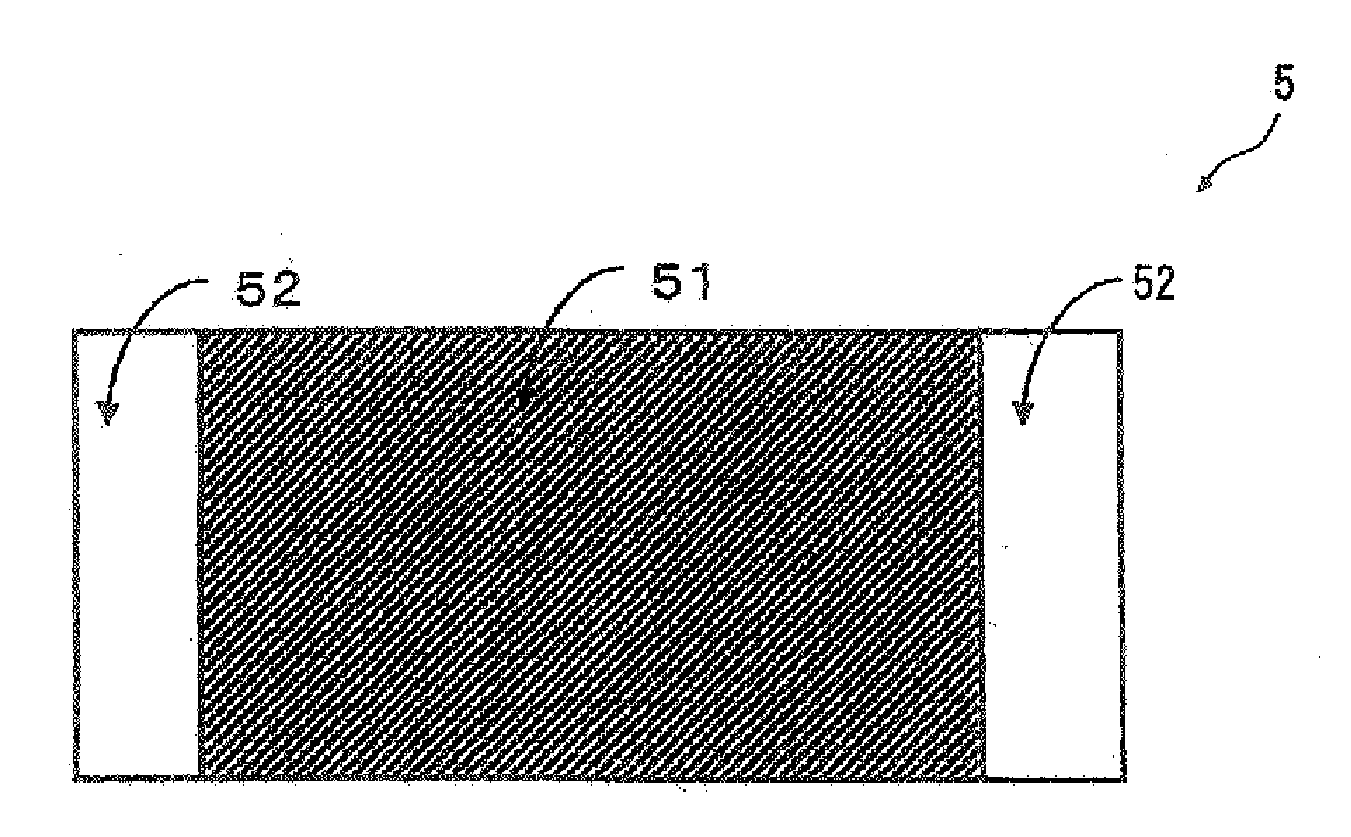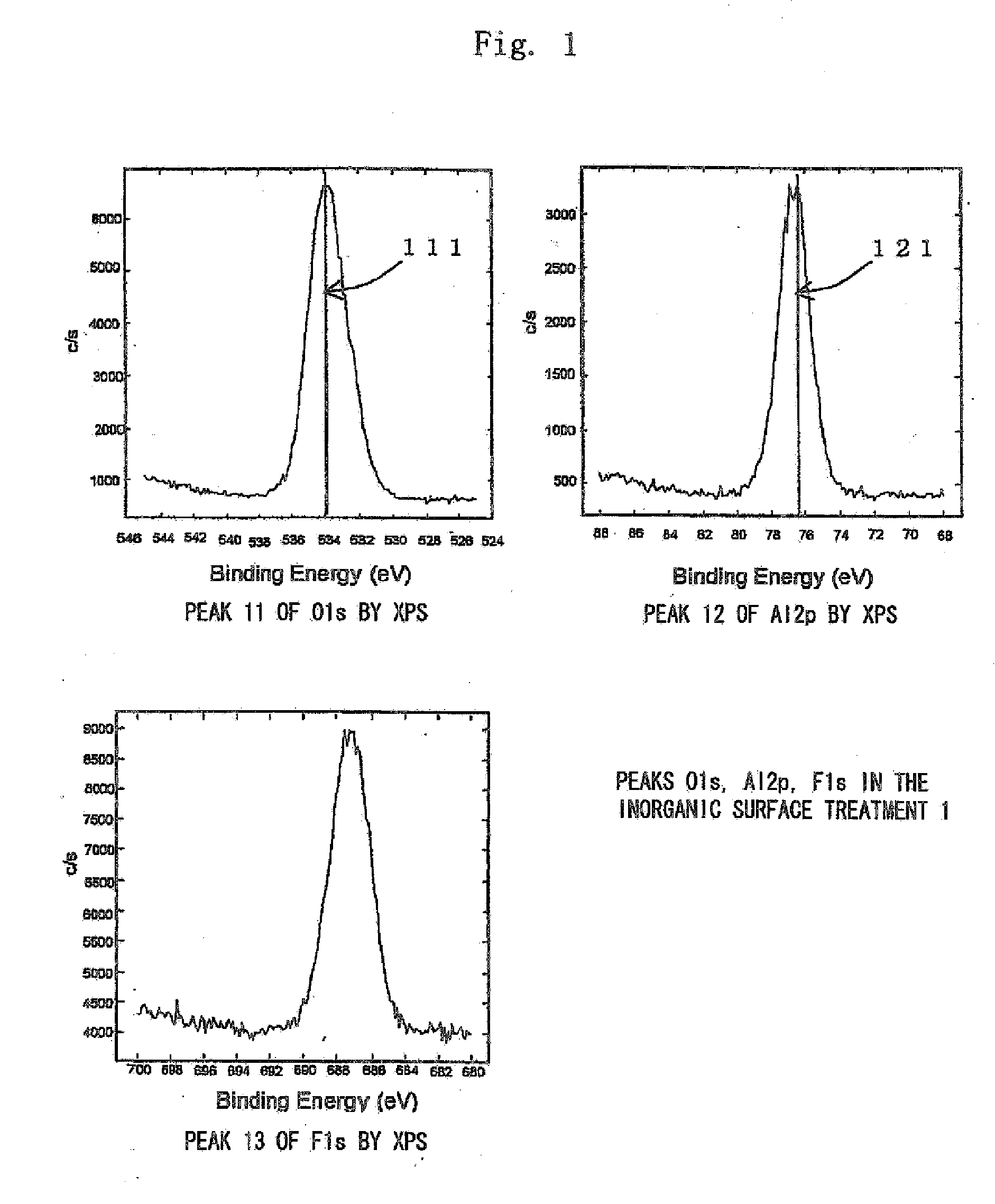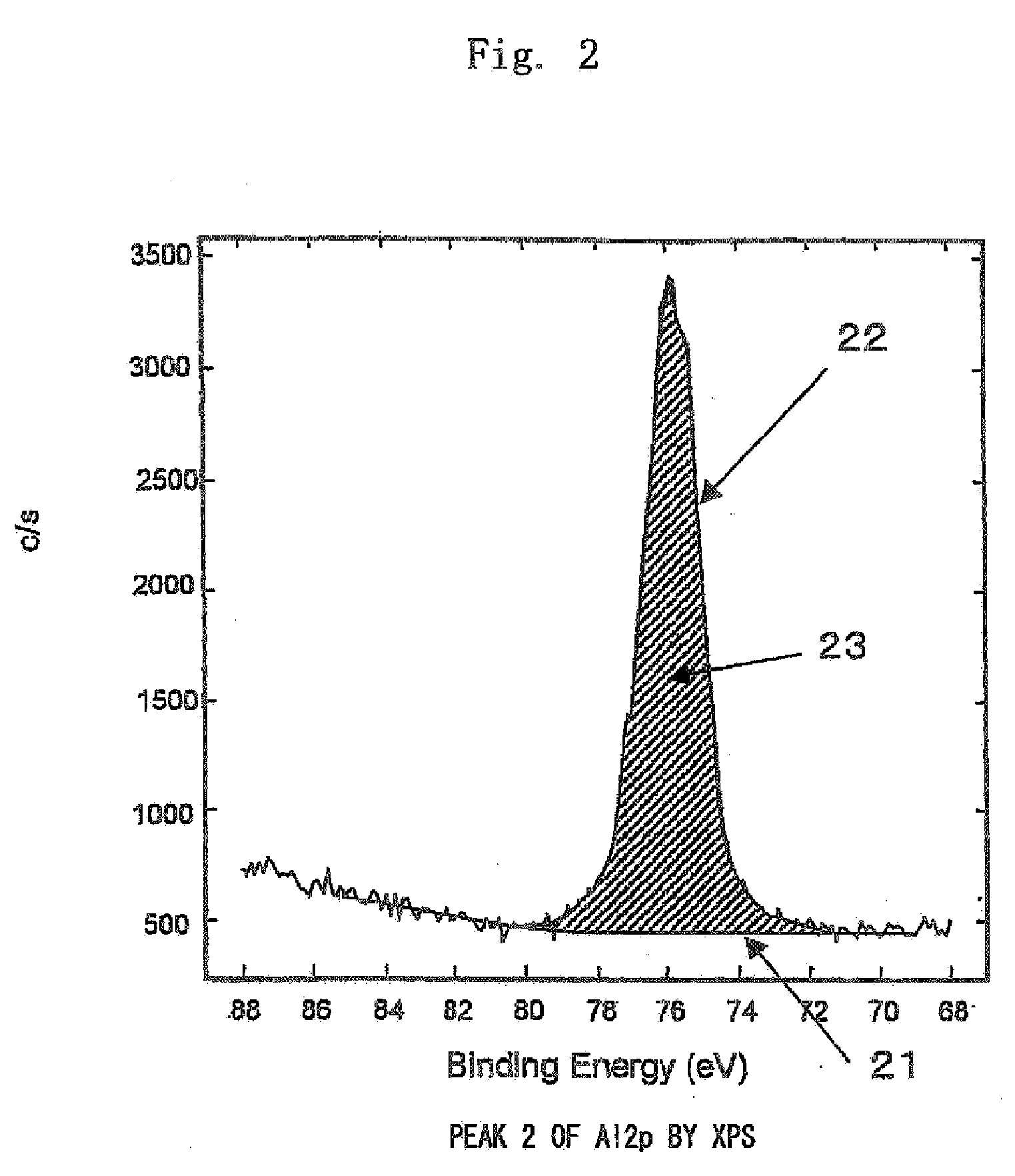Surface-Treated Metal Materials, Method of Treating the Surfaces Thereof, Resin-Coated Metal Materials, Cans and Can Lids
- Summary
- Abstract
- Description
- Claims
- Application Information
AI Technical Summary
Benefits of technology
Problems solved by technology
Method used
Image
Examples
example 1
1. Formation of a Surface-Treated Metal Sheet
[0224]As a metal sheet, an aluminum alloy sheet, JIS 5021H18, having a thickness of 0.25 mm was pretreated, i.e., treated with a dewaxing agent 322N8 (produced by Nihon Paint Co.) according to an established method in a bath maintained at 70° C. for 10 seconds, and was washed with water, immersed in 1% sulfuric acid maintained at 40° C. for 5 seconds, washed with water and, then, with pure water. Next, the cathodic electrolysis was intermittently conducted in the treating bath A shown in Table 2 maintained at a bath temperature of 45° C. with stirring, using a titanium sheet coated with iridium oxide disposed at a position maintaining an interelectrode distance of 17 mm as an anode at a current density of 10 A / dm2 and flowing the current for 0.4 seconds and halting the current for 0.6 seconds repetitively 4 times. The aluminum alloy sheet was immediately subjected to the after-treatment, i.e., washing with flowing water, with pure water a...
example 2
[0230]The surface was treated, coated with the resin, and the lids were formed and evaluated in the same manner as in Example 1 but setting the current density to be 5 A / dm2 and flowing the current for 0.6 seconds and halting the current for 0.4 seconds repetitively 8 times.
example 3
[0231]The surface was treated, coated with the resin, and the lids were formed and evaluated in the same manner as in Example 1 but using the treating bath B of Table 2 and setting the current density to be 7 A / dm2.
PUM
| Property | Measurement | Unit |
|---|---|---|
| Fraction | aaaaa | aaaaa |
| Dissociation constant | aaaaa | aaaaa |
| Dissociation constant | aaaaa | aaaaa |
Abstract
Description
Claims
Application Information
 Login to View More
Login to View More - R&D
- Intellectual Property
- Life Sciences
- Materials
- Tech Scout
- Unparalleled Data Quality
- Higher Quality Content
- 60% Fewer Hallucinations
Browse by: Latest US Patents, China's latest patents, Technical Efficacy Thesaurus, Application Domain, Technology Topic, Popular Technical Reports.
© 2025 PatSnap. All rights reserved.Legal|Privacy policy|Modern Slavery Act Transparency Statement|Sitemap|About US| Contact US: help@patsnap.com



